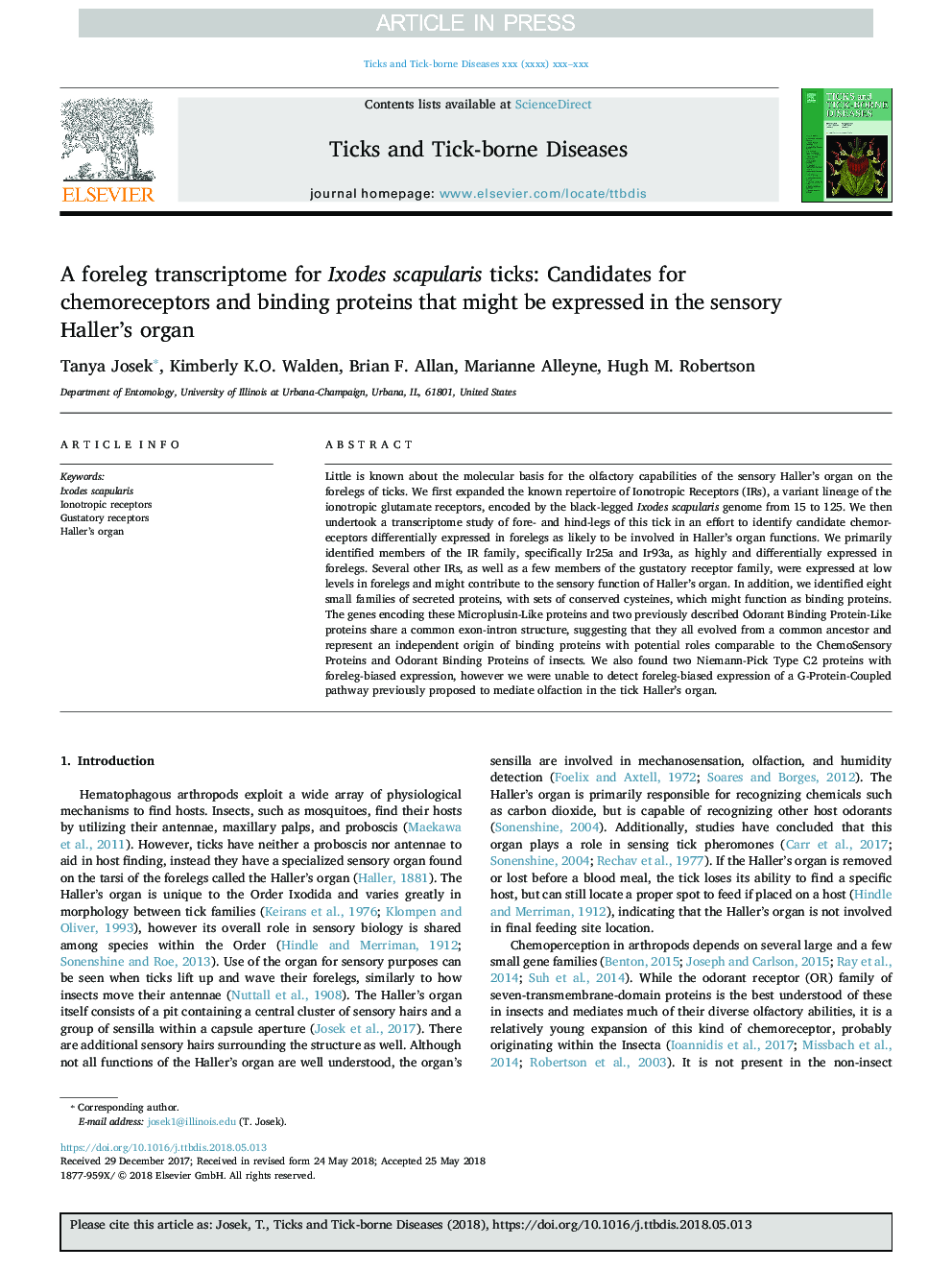| Article ID | Journal | Published Year | Pages | File Type |
|---|---|---|---|---|
| 8507100 | Ticks and Tick-borne Diseases | 2018 | 11 Pages |
Abstract
Little is known about the molecular basis for the olfactory capabilities of the sensory Haller's organ on the forelegs of ticks. We first expanded the known repertoire of Ionotropic Receptors (IRs), a variant lineage of the ionotropic glutamate receptors, encoded by the black-legged Ixodes scapularis genome from 15 to 125. We then undertook a transcriptome study of fore- and hind-legs of this tick in an effort to identify candidate chemoreceptors differentially expressed in forelegs as likely to be involved in Haller's organ functions. We primarily identified members of the IR family, specifically Ir25a and Ir93a, as highly and differentially expressed in forelegs. Several other IRs, as well as a few members of the gustatory receptor family, were expressed at low levels in forelegs and might contribute to the sensory function of Haller's organ. In addition, we identified eight small families of secreted proteins, with sets of conserved cysteines, which might function as binding proteins. The genes encoding these Microplusin-Like proteins and two previously described Odorant Binding Protein-Like proteins share a common exon-intron structure, suggesting that they all evolved from a common ancestor and represent an independent origin of binding proteins with potential roles comparable to the ChemoSensory Proteins and Odorant Binding Proteins of insects. We also found two Niemann-Pick Type C2 proteins with foreleg-biased expression, however we were unable to detect foreleg-biased expression of a G-Protein-Coupled pathway previously proposed to mediate olfaction in the tick Haller's organ.
Related Topics
Life Sciences
Agricultural and Biological Sciences
Animal Science and Zoology
Authors
Tanya Josek, Kimberly K.O. Walden, Brian F. Allan, Marianne Alleyne, Hugh M. Robertson,
